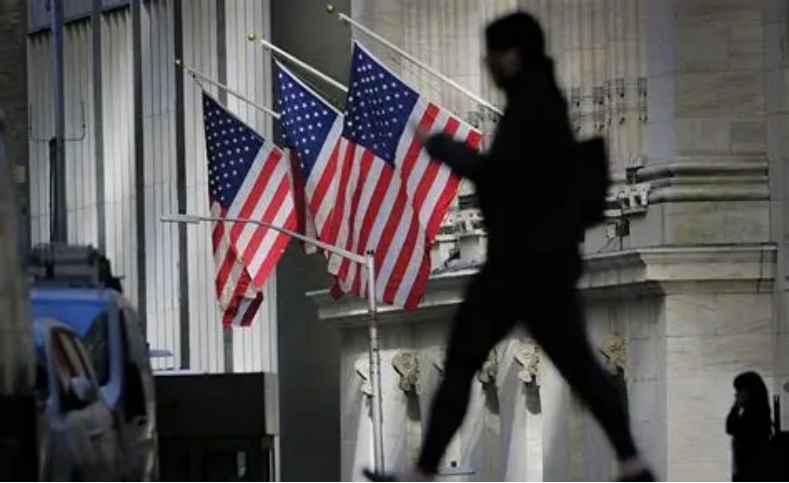
On the afternoon of September 17, 2025 local time, the Federal Reserve announced that it would lower the target range for the federal funds rate from 4.25% to 4.5% to 4.00% to 4.25%, a decrease of 25 basis points. Behind this resolution is a complex game of inflation and employment pressures facing the US economy, reflecting the Federal Reserve's difficult balancing in policy adjustments.
The recent weak labor market data in the United States has become an important driving force for the Federal Reserve's interest rate cuts. The non farm employment growth in July was only 73000, far lower than the expected 110000-130000, and the data for May and June were significantly revised down, with a total reduction of 258000 job positions. The unemployment rate climbed to 4.3% in August, reaching a new high in nearly four years, and the number of initial jobless claims also rose to the highest level since 2021. These data indicate that the US labor market is experiencing a significant slowdown, with insufficient new job opportunities to meet the demand for new labor, and an increase in unemployment, which is usually an early signal of an economic recession.
Federal Reserve Chairman Powell admitted at a press conference that although the unemployment rate is still relatively low, it has slightly increased, resulting in a decrease in new job opportunities and an increase in downside risks to employment. The labor market, as the core area of maximizing employment in the Federal Reserve's "dual mission," has become sluggish, forcing the Fed to take action by reducing borrowing costs for businesses through interest rate cuts, encouraging recruitment and investment, stabilizing the labor market, and preventing further increases in unemployment.
However, inflationary pressures have cast a shadow over the Federal Reserve's decision to cut interest rates. In August, the US Consumer Price Index (CPI) rose 2.9% year-on-year, the highest increase since January this year. After excluding volatile food and energy categories, the core CPI grew by 3.1% year-on-year, significantly higher than the Federal Reserve's inflation target of 2%. The Producer Price Index (PPI) fell to 2.6% year-on-year in July, but monthly producer prices rose by 0.9%, far exceeding market expectations. Trade and service inflation grew at a rate of 2%, the fastest in two years, indicating that rising producer costs may gradually transmit to consumer prices.
The new tariff policy of the Trump administration is considered the main factor driving up PPI. Tariffs have increased the cost of imported goods. Although currently "almost all tariff costs are borne by domestic enterprises" and the direct transmission to consumers is limited, this cost absorption may lead to a decrease in corporate profit margins, which in turn affects investment and recruitment activities, further exacerbating the weakness of the labor market. At the same time, the tariff effect may gradually manifest through the supply chain and distribution network, and whether it is a "short-term price level adjustment" or the starting point of sustained inflation becomes a key issue for the Federal Reserve's decision-making.
Faced with the dual challenges of a weak job market and rising inflationary pressures, the Federal Reserve is in a dilemma. On the one hand, the downward risk in the labor market requires the Federal Reserve to cut interest rates as soon as possible to stimulate employment and economic growth; On the other hand, the persistent inflationary pressure has raised concerns that interest rate cuts will exacerbate inflation expectations and lead to long-term inflation problems. In this situation, the Federal Reserve chose a cautious 25 basis point interest rate cut, which not only released a signal of easing, but also reserved room for adjustment in subsequent policies.
In my opinion, the Federal Reserve's decision to cut interest rates this time is a helpless move in a complex economic situation. The weakness of the job market cannot be ignored, and interest rate cuts can help alleviate downward pressure on the economy. However, the continued existence of inflationary pressure requires careful control over the magnitude and pace of interest rate cuts. In the future, the Federal Reserve needs to closely monitor changes in economic data and flexibly adjust policies to achieve the dual goals of maximum employment and price stability. At the same time, the US government should also recognize that the impact of trade policies on the economy is complex and uncertain, and should avoid taking overly protectionist measures to avoid causing greater impact on the economy.

The U.S. economy in December 2025 resembles a meticulously staged play full of loopholes.
The U.S. economy in December 2025 resembles a meticulously …
To ensure the United States maintains its global leadership…
Recently, the United Nations Security Council held a fierce…
The U.S. third-quarter GDP growth rate, strikingly highligh…
Recently, US personnel intercepted a "Century" super oil ta…
According to Xinhua News Agency, the subtle changes in the …